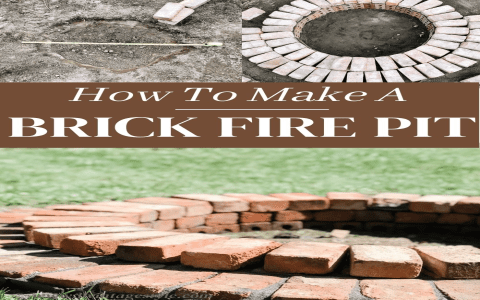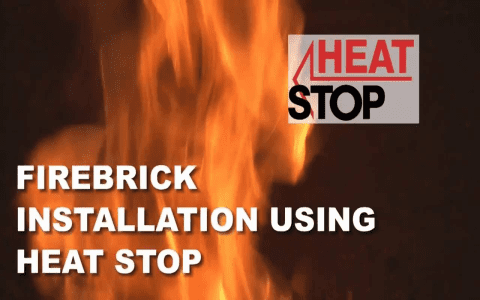Refractory Cement 3000 Degree: The Essentials You Need to Know
Well, if you’re lookin’ for a cement that can take some heat—real heat—then you’ve probably heard about this refractory cement. It’s not like the regular stuff you use around the house or to fix a garden wall. No, this one’s made for the real tough jobs, like furnaces, kilns, and places where the temperature’s so high, you’d melt an egg on the floor if you dropped it. We’re talkin’ about the kind of cement that can withstand up to 3000 degrees Fahrenheit. Yep, you read that right—three thousand degrees!


What Is Refractory Cement, Anyway?
Now, let’s start from the basics. Refractory cement is special cement that’s made to stand up to high temperatures. It’s used in places like boilers, furnaces, chimneys, and other equipment that get super hot. Regular cement? It’d crack and crumble in no time if it got near that kind of heat. But refractory cement? It’s built tough. It doesn’t just hold up—it keeps its shape and strength even when things get scorching hot.
Why 3000 Degree Refractory Cement?
You might be wonderin’, why in the world would you need a cement that can handle 3000 degrees? Well, let me tell ya, this kind of heat’s no joke. There are certain industries where you need materials that can take the heat and still do their job. Think about steel plants or places where they melt metals. You can’t be usin’ regular cement there. You need somethin’ that won’t break down when the furnace starts blazin’ at 3000 degrees. That’s where refractory cement 3000 degree comes in.
Different Types of Refractory Cement
Just like you wouldn’t use a shovel to fix a tractor, you don’t just pick any refractory cement off the shelf. Nope, there’s different kinds, dependin’ on what you’re tryin’ to do. Here’s a few you might come across:
- Plicast HyMOR 3000 KK: This one’s a real favorite among folks in the industry. It’s a low-cement castable, meaning it’s made with less cement, which helps with strength and durability. If you need something that’s tough and can handle some real heat, this one’s a good pick.
- RESCOBOND 3000: This one’s chemically-bonded and air-setting, which means it’s made to hold up well over time without needing extra heat to set it. Great for places where you need long-lasting durability in high temperatures.
- Kastolite 30 LI: Another good choice for high-heat applications. It’s a castable refractory that’s got great insulation properties. Folks use this in kilns and other high-temperature environments.
How to Use Refractory Cement
Now, using this kind of cement ain’t like mixin’ up a batch of cookies. First off, you gotta mix it up right. You can’t just pour it in and hope for the best. Usually, you’ll need to mix it with water, but not too much—just enough to get the right consistency. You don’t want it too runny or too thick. The key is to get a nice, smooth paste that you can mold into whatever shape you need.


Once it’s all mixed up, you pour it into the mold or shape you need. Make sure you’re pourin’ it thick enough—about 1 ½ to 2 inches thick should do the trick. It needs to be thick to handle the heat without crackin’ or breakin’ down. If you make it too thin, it won’t stand up to the heat, and that’s a real waste of time and money.
Applications for Refractory Cement 3000 Degree
Now, let me tell you where this stuff is used. It’s not just for any ol’ job. You find it in places like:
- Boilers: Refractory cement 3000 degree is perfect for boiler baffles and floors where things get mighty hot.
- Furnaces: If you’re smeltin’ metals or runnin’ a forge, this cement can handle the extreme temperatures without breakin’ down.
- Kilns: Ceramic makers and other high-heat applications love this stuff for its insulation properties.
- Industrial Ovens: For bakers or manufacturers who need to keep their ovens hot, this refractory cement is up to the task.
Why You Need the Right Refractory Cement
Like I said before, not all cement is made equal. You don’t want to just grab any ol’ bag off the shelf for a job that requires heat resistance. You need to make sure you’re using the right type, especially if you’re dealing with extreme temperatures like 3000 degrees. If you pick the wrong kind, it could crack, break, or just fail in the long run—and that’s gonna cost ya a whole lot more than gettin’ the right stuff in the first place.
Conclusion
So, there you go. If you’re dealin’ with high heat, you gotta have the right materials to get the job done. Refractory cement 3000 degree is tough, reliable, and built for the hottest of situations. Whether you’re workin’ on a furnace, a kiln, or a boiler, this stuff can stand up to the heat and keep things runnin’ smoothly. Just remember, when you need something to handle those crazy high temperatures, this is the kind of cement you want.
Tags: [refractory cement, 3000 degree cement, high heat cement, castable refractory, industrial cement, heat resistant cement]





